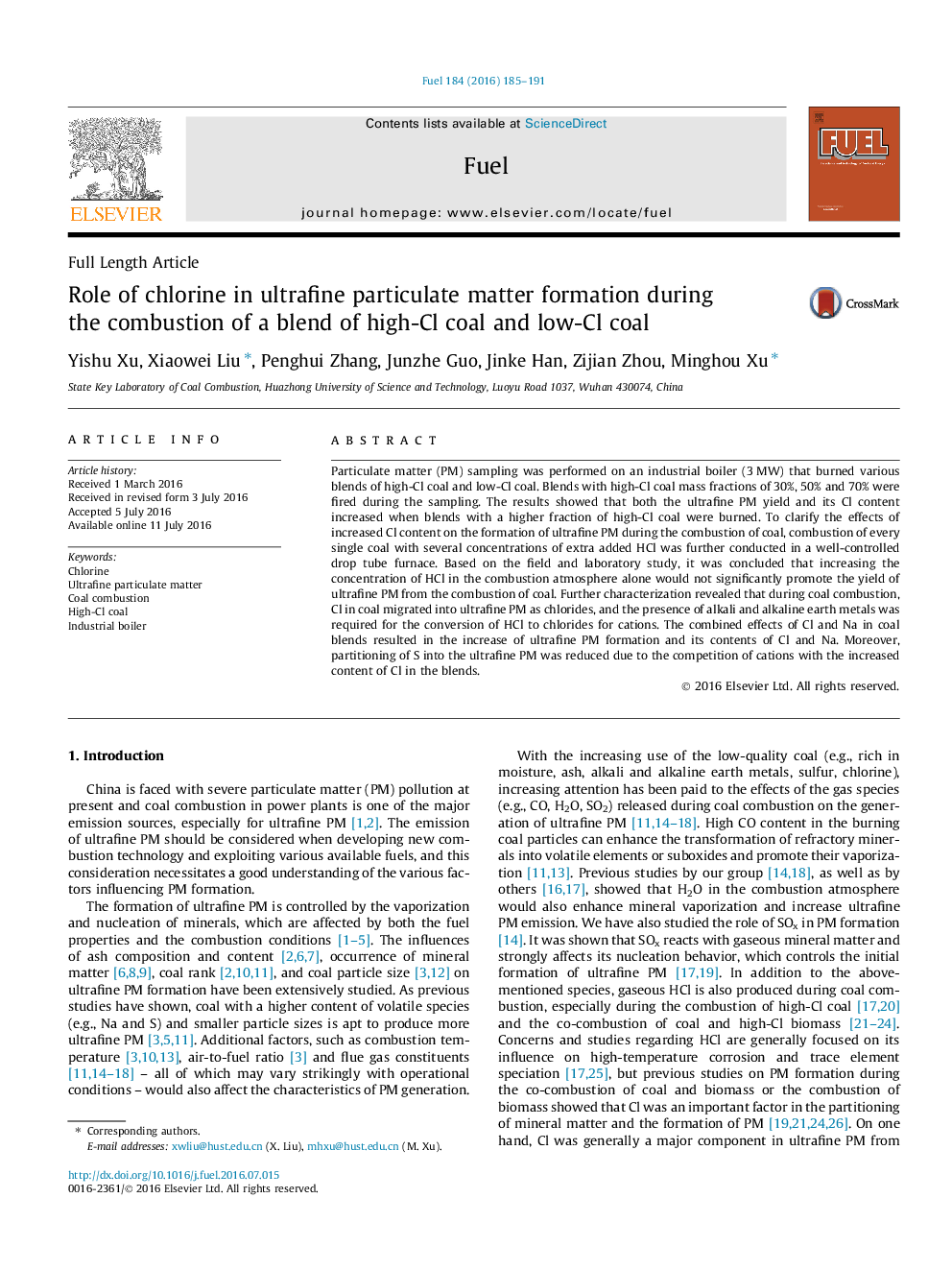| Article ID | Journal | Published Year | Pages | File Type |
|---|---|---|---|---|
| 6632978 | Fuel | 2016 | 7 Pages |
Abstract
Particulate matter (PM) sampling was performed on an industrial boiler (3Â MW) that burned various blends of high-Cl coal and low-Cl coal. Blends with high-Cl coal mass fractions of 30%, 50% and 70% were fired during the sampling. The results showed that both the ultrafine PM yield and its Cl content increased when blends with a higher fraction of high-Cl coal were burned. To clarify the effects of increased Cl content on the formation of ultrafine PM during the combustion of coal, combustion of every single coal with several concentrations of extra added HCl was further conducted in a well-controlled drop tube furnace. Based on the field and laboratory study, it was concluded that increasing the concentration of HCl in the combustion atmosphere alone would not significantly promote the yield of ultrafine PM from the combustion of coal. Further characterization revealed that during coal combustion, Cl in coal migrated into ultrafine PM as chlorides, and the presence of alkali and alkaline earth metals was required for the conversion of HCl to chlorides for cations. The combined effects of Cl and Na in coal blends resulted in the increase of ultrafine PM formation and its contents of Cl and Na. Moreover, partitioning of S into the ultrafine PM was reduced due to the competition of cations with the increased content of Cl in the blends.
Related Topics
Physical Sciences and Engineering
Chemical Engineering
Chemical Engineering (General)
Authors
Yishu Xu, Xiaowei Liu, Penghui Zhang, Junzhe Guo, Jinke Han, Zijian Zhou, Minghou Xu,
